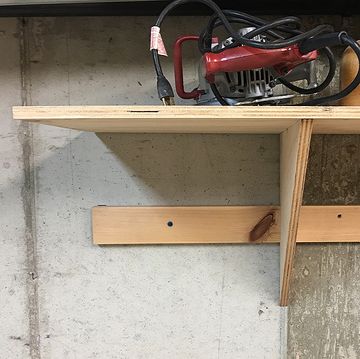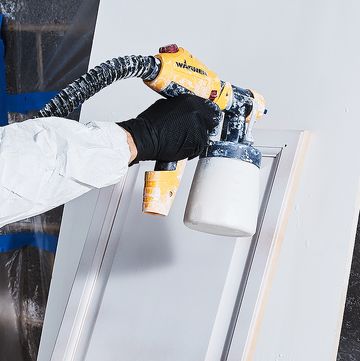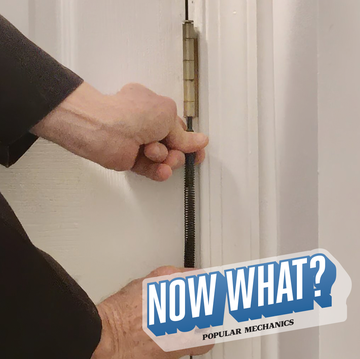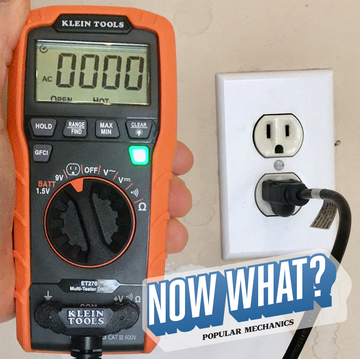We regularly experience severe storms where we live, and I want to stock up on emergency supplies. We don't have a basement. Can you give us some tips on storing these items in the garage?
It makes perfect sense to look at your garage as a command center if a natural or man-made disaster strikes. Clean up the clutter and you'll find a no-nonsense space with a concrete floor and great access for equipment. It's perfect for storing tools and supplies.
Your first job will be to build additional shelving and racks to organize your disaster-related materialsconstruction lumber and plywood work just fine for this purpose. Disasters are difficult to deal with, so you want ready access to your gear rather than having to disentangle what you need from lawn chairs, toys, and sports equipment. Shelving also protects tools and materials from the condensation that forms on many garage floors; this dampness can wreck stored items. If you live somewhere with high summer humidity, consider increasing air circulation by installing a low-speed fan or a power vent in the roof.
Storing fuel for chain saws, generators, and gas grills brings up an important safety issue. Never store propane in your house, not even in the garage. Find a sheltered place for it outside, such as behind a shed or a woodpile.
Similarly, keep as little gasoline as possible in the garage. If you have a shed, use that instead. Regardless of where you store your fuel, your safest bet is to use a self-venting metal safety can with a flashback arrestor. A 5-gallon can costs $40 to $90 depending on features. A plastic gas can that size typically costs about $20, but spending the extra money for a metal can is worth it. The metal Type 1 can is far tougher, and that's a good thing during an emergency. The last thing you need is to create a disaster of your own with a fuel spill or fire.
Finally, never run a generator in a garage. Even with the door wide open, a generator produces enough carbon monoxide to kill you or make you very sick. Set up the machine well away from the house and connect it to electrical loads with heavy-duty extension cords or a transfer switch wired into the home's service panel. Whatever you do, don't make a double-end extension cord with one end connected to the generator and the other plugged into a wall outlet. Known as backfeeding, this sends electricity to every other outlet on the same branch circuit. It's dangerous. If someone forgets to switch off the house's main breaker, the setup can send generated electricity out of the house and onto the grid, endangering utility workers, firefighters, and your neighbors working to clear storm damage.
The Garage Fortress
If your region is at risk for hurricanes, earthquakes, or tornadoes, it's smart to beef up your garage, along with the house. The illustration at left shows some common vulnerabilities in any structureand how to fix them. It's also very important to make sure your home conforms to local building codes.
FRAMING
There are many ways to fortify a garage, from bracing its roof trusses to adding metal brackets and straps that tie its parts together. You can even install brackets that better secure the garage to its foundation. A good basic guide is "Building for High Wind Resistance in Light-Frame Wood Construction." It's published by the Engineered Wood Association (apawood.org). Also visit manufacturer Simpson Strong-Tie's website to look at the connectors, the straps, the bolts, and the screws that can dramatically increase a wood structure's strength (strongtie.com). "The most important thing is to create a continuous load path by connecting all parts of the structure from the roof to the foundation," Emory Montague, a structural engineer with Simpson Strong-Tie, says. This reduces the chances of a part blowing off, opening the building to wind forces.
WINDOWS AND DOORS
The best way to protect these openings is with plywood storm shutters cut to size ahead of time and stored on shelves in the garage. A valuable guide, "Against the Wind: Protecting Your Home From Hurricane Damage," is available at FEMA's website (fema.gov).
GARAGE DOOR
Unless you have a garage door rated for high-wind resistance, you need to brace it with a vertical support and horizontal lumber. You can buy a kit consisting of hardware and mounting brackets, and a high-strength aluminum pole to install vertically behind the door (securedoor.com).

Roy Berendsohn has worked for more than 25 years at Popular Mechanics, where he has written on carpentry, masonry, painting, plumbing, electrical, woodworking, blacksmithing, welding, lawn care, chainsaw use, and outdoor power equipment. When he’s not working on his own house, he volunteers with Sovereign Grace Church doing home repair for families in rural, suburban and urban locations throughout central and southern New Jersey.













